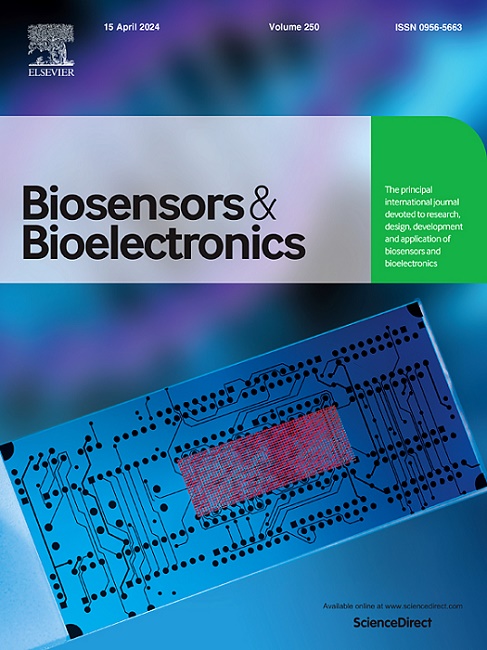Molecular modulation of aggregation-induced luminescence for improving response sensing of DNA hydrogels
IF 10.7
1区 生物学
Q1 BIOPHYSICS
引用次数: 0
Abstract
Circadian rhythms are closely associated with human health, and the detection of relevant markers is essential to avoid circadian disorders. Here, we report a biosensing platform based on aggregation-induced emission for the sensitive detection of such markers. In this platform, the structure of 4,4′,4″,4‴-(ethene-1,1,2,2-tetrayl)tetrabenzaldehyde (ETBA) was modulated at the molecular level to 4′,4‴,4‴″,4⁗‴-(ethene-1,1,2,2-tetrayl)tetrakis([1,1′-biphenyl]-4-carbaldehyde) (ETBCA), thereby increasing the energy levels of the highest and lowest unoccupied molecular orbitals, reducing the energy gap, and enhancing the conjugation effect, ultimately improving the fluorescence properties of the molecule. ETBCA was the starting monomer used to synthesize ETBCA-loaded nanoparticles (ETBCANPs) with higher quantum yields and longer fluorescence lifetimes, which were then loaded onto responsive DNA hydrogels for the sensitive detection of melatonin. The resulting loaded hydrogel (ETBCANPs@Hydrogel) showed superior performance compared to hydrogels loaded with ETBA nanoparticles and quantum dots, with 2.9- and 3.6-fold higher sensitivities, respectively. The ETBCANPs@Hydrogel was able to detect melatonin in saliva and urine samples with limits of detection of 18.6 pg/mL and 10.5 pg/mL, respectively, recoveries of 94.2–107.5%, and satisfactory selectivity. In summary, the fluorescence performance of aggregation-induced emission molecules can be effectively improved by modulating their molecular structure, leading to the development of hydrogels for the sensitive sensing and detection of circadian rhythm disorders.
求助全文
约1分钟内获得全文
求助全文
来源期刊

Biosensors and Bioelectronics
工程技术-电化学
CiteScore
20.80
自引率
7.10%
发文量
1006
审稿时长
29 days
期刊介绍:
Biosensors & Bioelectronics, along with its open access companion journal Biosensors & Bioelectronics: X, is the leading international publication in the field of biosensors and bioelectronics. It covers research, design, development, and application of biosensors, which are analytical devices incorporating biological materials with physicochemical transducers. These devices, including sensors, DNA chips, electronic noses, and lab-on-a-chip, produce digital signals proportional to specific analytes. Examples include immunosensors and enzyme-based biosensors, applied in various fields such as medicine, environmental monitoring, and food industry. The journal also focuses on molecular and supramolecular structures for enhancing device performance.
 求助内容:
求助内容: 应助结果提醒方式:
应助结果提醒方式:


